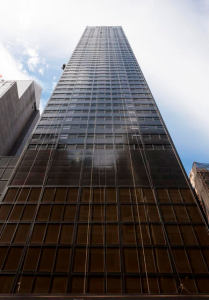As the years pass, weather and pollutants will dull and even corrode all types of aluminum building façades, including anodized. If the aluminum cladding is not properly cared for, it can sustain permanent damage. Although it is common knowledge architectural finishes can be applied in the field to renew and protect aluminum curtainwalls with little disruption to building occupants, what is less known is that field-applied coatings that will offer the same long-term performance of factory-applied coatings can be specified.
“Most architects, engineers and facilities people are not aware they can have the same factory-applied coating system performed in the field as an air-dry system, or ADS, restoration process,” says Rex Dean, New York-based Stuart Dean Co. Inc.’s director of façade restoration and a National Association of Corrosion Engineers (NACE) International- certified coating inspector. “Often they choose lesser-performing coatings or they opt to rip out and replace cladding, saying they want long-term performance but not knowing they can get it field-applied.”

Most Common Finishes
Although Stuart Dean specializes in restoring many types of materials, including stone, wood and glass, 90 percent of the façades its teams refurbish are composed of the following factory-applied finishes:
- High-performance coatings: AAMA 2604*, “Voluntary Specification, Performance Requirements and Test Procedures for High Performance Organic Coatings on Aluminum Extrusions and Panels”
- Superior coatings: AAMA 2605*, “Voluntary Specification, Performance Requirements and Test Procedures for Superior Performing Organic Coatings on Aluminum Extrusions and Panels”
- Class I high-performance anodic finishes used in exterior applications receiving periodic maintenance, such as curtainwalls.
- Class II commercial anodic coatings used in interior applications or exterior applications receiving regularly scheduled cleaning and maintenance, such as storefronts.
(*View a comparison of these coating standards.)
To meet these standards, Stuart Dean maintains a 15,000-square-foot training facility in Cleveland where its technicians are annually trained by coatings manufacturers to certify their abilities to clean façades without further damaging existing coatings and apply new coatings and clear coats.
All technicians also are certified NACE coating inspectors. Although NACE’s coating inspector program is designed for steel structures, Stuart Dean has adapted it to aluminum. “By applying the NACE protocol of quality inspection and coating understanding to the architectural aluminum field, our teams know where those most common finishes should be in regard to mil thickness and adhesion that are essential to performance,” Dean adds.


